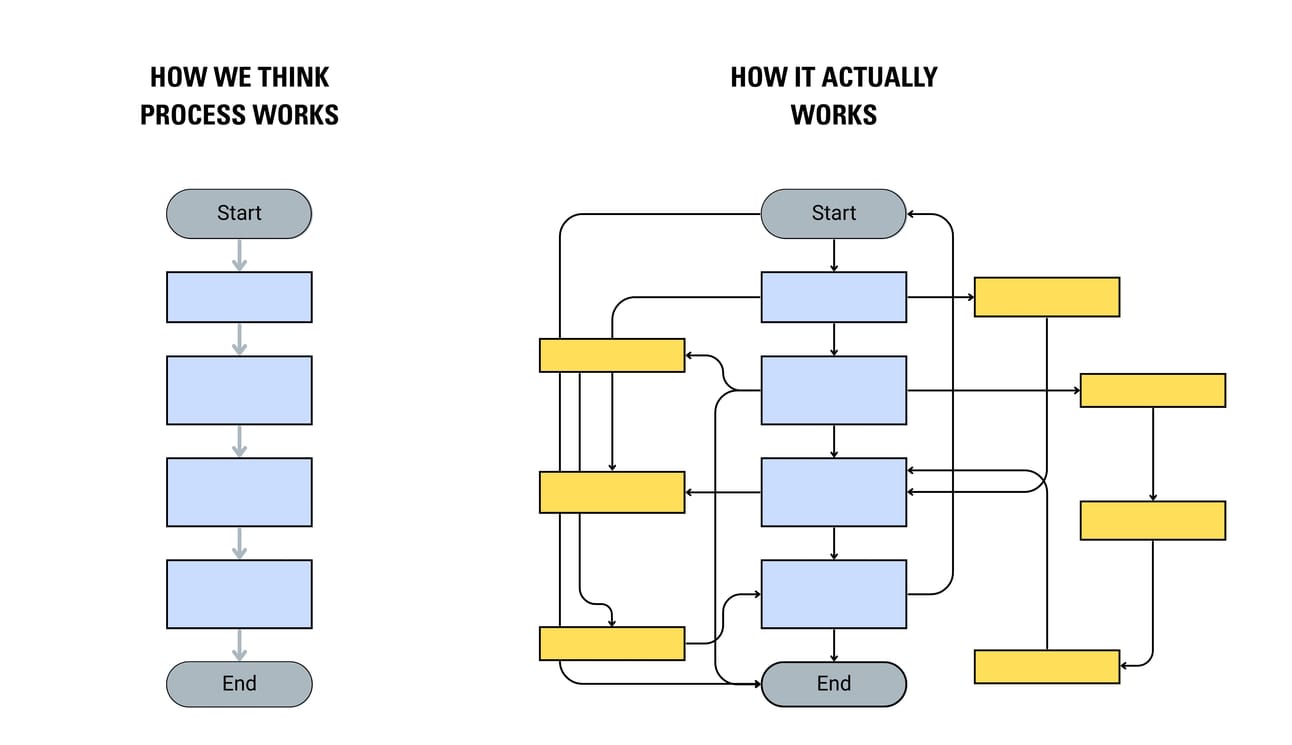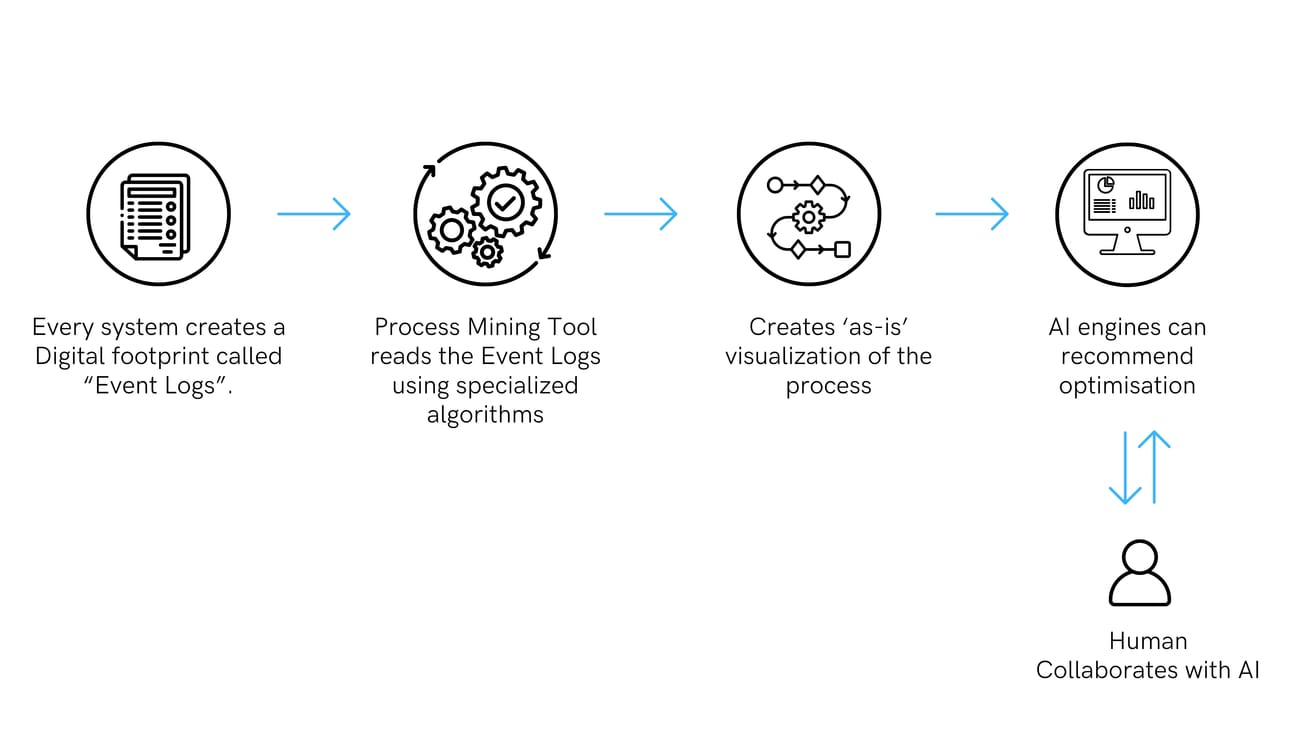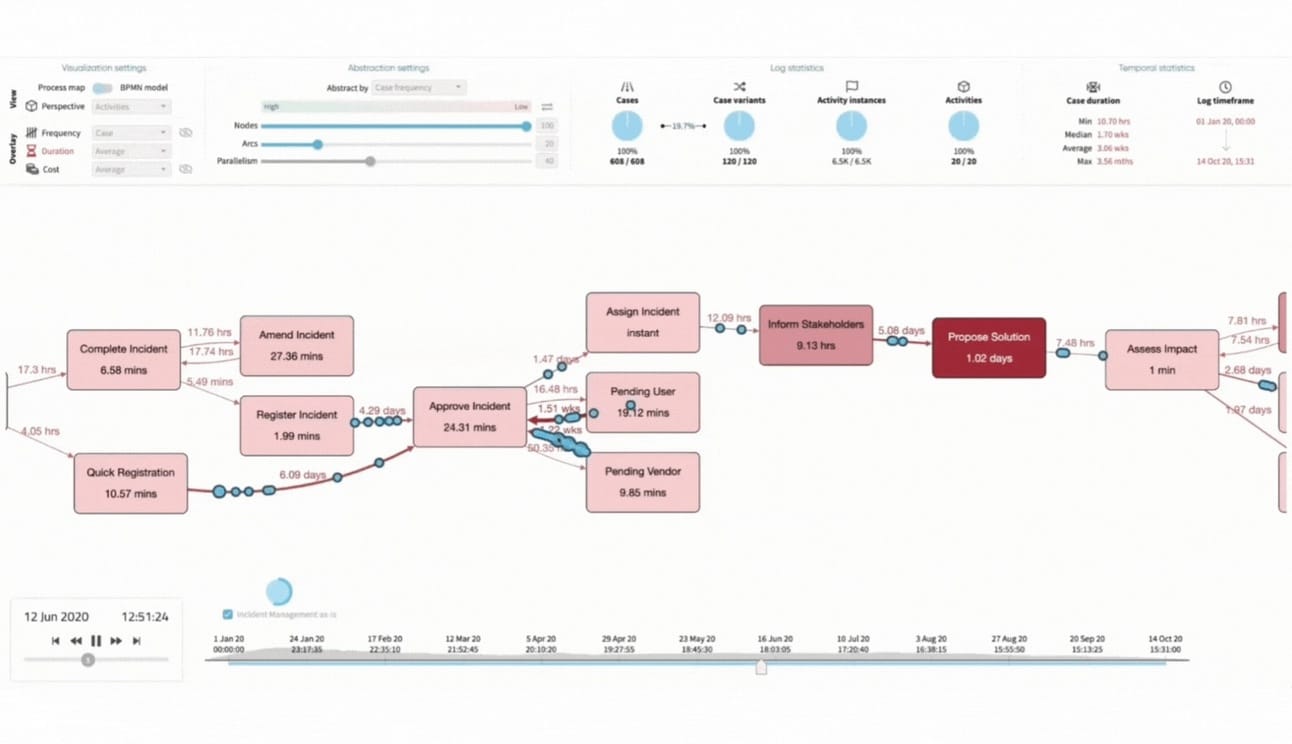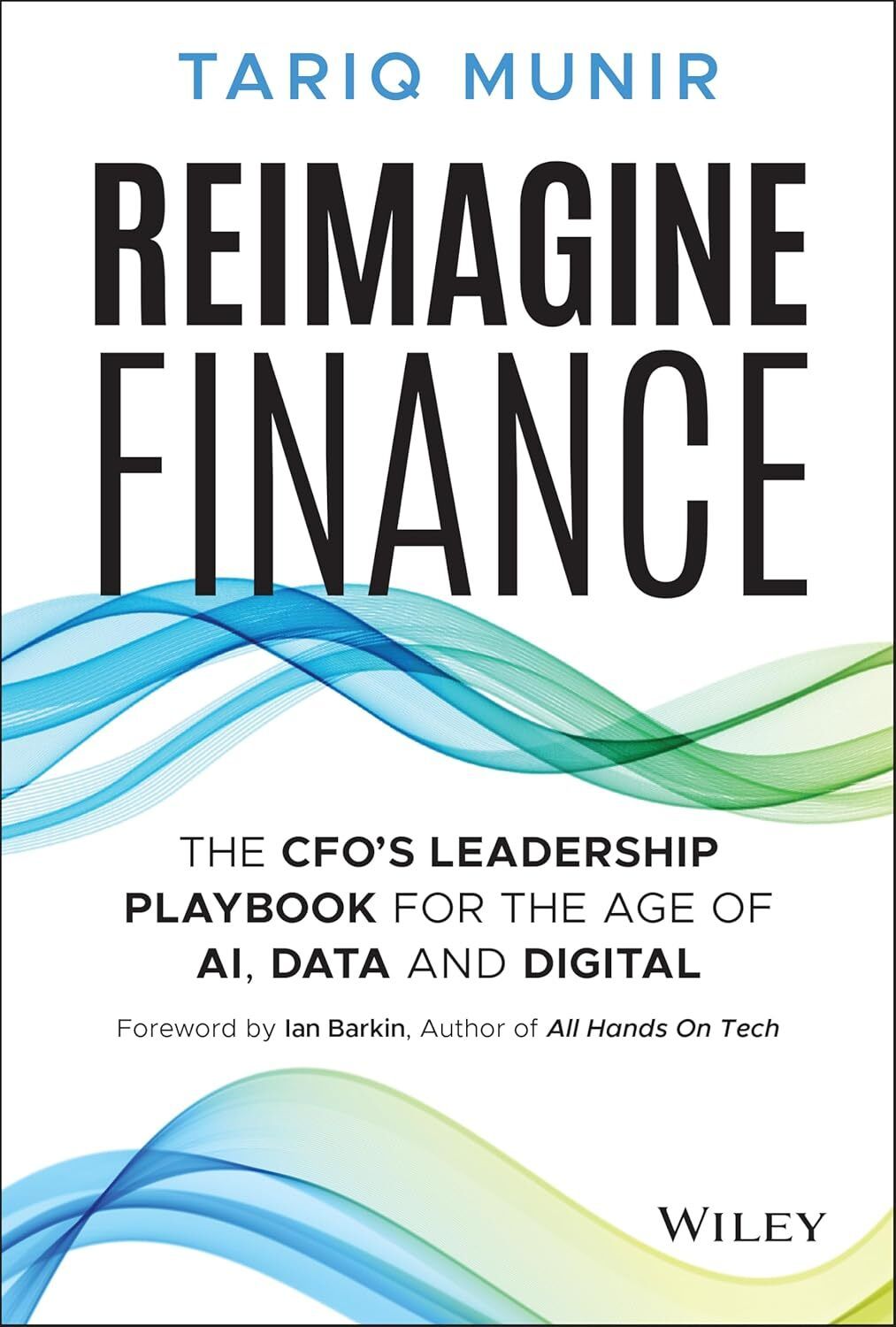- Profitable AI Weekly
- Posts
- AI-Powered Process Mining
AI-Powered Process Mining
Turn messy process data into your biggest profit drivers
Today’s edition is co-authored by Tariq Munir – a leading Digital Transformation Advisor who’s has helped Fortune 500 CFOs turn process insights into profit.
ERP data is boring.
And boring data is usually the most profitable. Why? Because people rarely look at it. And if they do, they typically give up 15 clicks in.
But buried inside those endless transaction logs – the approvals, rejections, weird delays – is your entire business process. Unfiltered. And with the right AI tools, that mess becomes a profit roadmap.
Today, I’m joined by Tariq, who’s helped companies like PepsiCo turn boring process data into financial wins. One of his clients recently found out that their biggest AI ROI didn’t come from a fancy innovation lab. It came from a $30K process insight hiding in plain sight.
So let’s dive in!
Get My Daily Insights on Profitable AI
|
Companies lose about 20% of their revenue every year due to inefficient processes. The irony is that your tech stack already contains the exact roadmap to fix them. It’s just a matter of reading the data, analyzing it and drawing the right conclusions – something where AI can help, as we’ll find out.
Every transaction in your ERP system, CRM software, and vendor tool creates a digital footprint called an "Event Log". When someone in accounting processes an invoice, a purchase order gets approved, a customer service ticket moves between departments – it all gets captured. Think of it as your business process leaving breadcrumbs everywhere it goes.
Process Mining is a family of analytics techniques for making sense of this data – uncovering of what actually happens in your workflows versus what you think happens. It is effectively an X-ray of your end-to-end business process. From thereon, it can help identify inefficiencies, bottlenecks, rework, compliance gaps, and automation opportunities.
Here's what one Order-to-Cash process in an SAP environment uncovered:
Reality check: 7-9 handoffs per sales order (documented process said 4)
Hidden delays: 65-day average cycle time with exceptions taking up to two months
Automation gaps: Less than 3% automation rate for "no-touch" order processing
Quick wins: 30% process waste identified in a 5-day sprint, generating $200K+ in annual productivity
For example, Kraft Heinz used process mining to reduce overdue payments by 30%, get better end-to-end visibility across Accounts Receivable, and renegotiate cash discounts.
The pattern is always the same: companies think they know their processes, but the data tells a completely different story. And once you see what's really happening, the fixes become obvious.

Real-World Impact
What separates process mining from other "AI transformation" projects is that the wins are typically pretty immediate, measurable, and often shock even the CFO. It also works across industries.
Here are some more public case studies from Celonis, a leading vendor in this space:
Healthcare
Sysmex used process mining to find out they were sitting on $3.4 million in overdue payments, increased overall cash flow by $10 million and, dropped late payment rate by 17 percentage points.
Manufacturing
Saint-Gobain cut up to 2 weeks from each of their 120 internal audit cycles and freed up 4.5 years of work time.
Retail
ALDI SÜD analyzed over 400 business processes and got €3.1 million out of it, just from doing what they were already doing, but better.
The list of case studies goes on and on. And if you're skeptical of vendor case studies (you always should be), process mining is one of the few areas where independent research actually backs up the hype.
The Pattern You Can't Ignore
Notice what these wins have in common? None came from deploying cutting-edge AI models. They came from seeing what was always there – buried in transaction logs, approval workflows, and system handoffs that everyone assumed were "just how things work."
The biggest AI ROI often isn't the sexiest.
If you like to dive deeper into the science behind process mining, check out the guru of process mining Wil van der Aalst. Here’s a great talk:
How It Works: From Data Dump to Profits
Step 1: Extract Your Process Data
Export 6+ months (or what you believe is a more representative sample) of transaction data from your ERP, CRM, or workflow system. No integration needed in the beginning. Start small and keep it simple. You can move on to real-time analysis of the process at a later stage.
Step 2: AI-Powered Process Discovery
Upload to a process mining tool. Numerous cloud-based tools are available, e.g. Celonis, Signavio, UiPath, Apromoré, and Microsoft Power Automate. Pre-built ML algorithms in these tools automatically map your as-is processes, creating visual flowcharts down to individual transactions.
Step 3: Baseline and Simulate
The tools generate KPIs automatically e.g. cycle times, bottlenecks, compliance gaps. You can run "what-if" scenarios to test improvements before implementation.
Step 4: Optimize and monitor
Target the biggest pain points for process redesign and automation. Set up continuous monitoring for ongoing optimization.

Unlike traditional process workshops that take weeks and rely on subjective interviews, Process Mining delivers objective insights in hours.
Here’s an example of how this could look like in practice:

How AI is Changing the Process Mining Game
Don't expect magic, but AI is genuinely transforming what's possible in process mining. Here's where the technology actually delivers:
1. Finding hidden dependencies that humans miss
Traditional process mining showed you the flow. AI-powered tools now automatically identify subtle dependencies and correlations across your entire process ecosystem. For example, AI can spot that approval delays in Department A consistently trigger bottlenecks in Department C three weeks later – connections that would take analysts months to discover manually.
2. Analyzing years of data in seconds
Saint-Gobain's 4.5-year time savings wasn't just from process improvement – it was from AI crunching massive datasets instantly. What used to require weeks of manual analysis now happens in real-time. AI can process millions of transactions and surface the 5% that actually matter.
3. Cleaning messy data at scale
70% of process mining time is spent cleaning data, not analyzing it. Modern AI tools help to write code that standardizes inconsistent data formats, identify duplicate entries, and fill gaps in transaction logs. This isn't glamorous, but it's where AI delivers one of the biggest time savings.
4. Translating results into plain english
Process mining outputs used to require specialized analysts to interpret. Now AI can automatically generate executive summaries: "Your accounts payable process has 47 variants, but 80% of delays come from manual approvals in the $1K-$5K range." Business users get insights without needing much technical training.
5. Providing specific, actionable recommendations
Instead of just highlighting bottlenecks, AI suggests specific fixes: "Automate approval for invoices under $2K to reduce cycle time by 12 days" or "Route high-value contracts directly to senior approvers to eliminate handoff delays." It's like having a process consultant working 24/7.
Getting started
Sometimes it might sound bit futuristic, but it is easier than you think. You do not need to go all in. Instead start small and build incrementally. You may find Chapter 5 of Tariq’s book, Reimagine Finance, very useful for this. Here is a quick outline on how to get you started.
1. Pick your target process. Start small. Generally, I find the best ROI to start with are Order-to-Cash, Procure-to-Pay, Customer Onboarding, and Master Data processes. Skip the strategy and innovation workflows for now.
2. Choose a Process Mining tool. Consider using Process Mining as a Service, since it is much more cost and time-efficient. For starters, you could even try ChatGPT to analyze transactional data.
3. Export event log data. In some tools, you might be able to do this by yourself. For others, you might need help from IT or a Process Mining vendor.
4. Start with a 3-month pilot to prove ROI. Don’t plan big roadmaps for now.
5. Scale based on results. Perform an honest evaluation.
Process mining transforms gut-feeling process improvement into data-driven optimization. Your systems already contain the roadmap to efficiency; AI just helps you translate it into profits.
You don't need to wait for some grand digital transformation initiative. You can start with a simple data export and have insights within days.
Keep your processes lean and your cash flowing.
See you next Friday!
Tariq & Tobias
PS: If you like to learn more about AI Process Mining, consider ordering a copy of “Reimagine Finance: The CFO's Leadership Playbook for the Age of AI, Data, and Digital” by Tariq Munir.


Reply